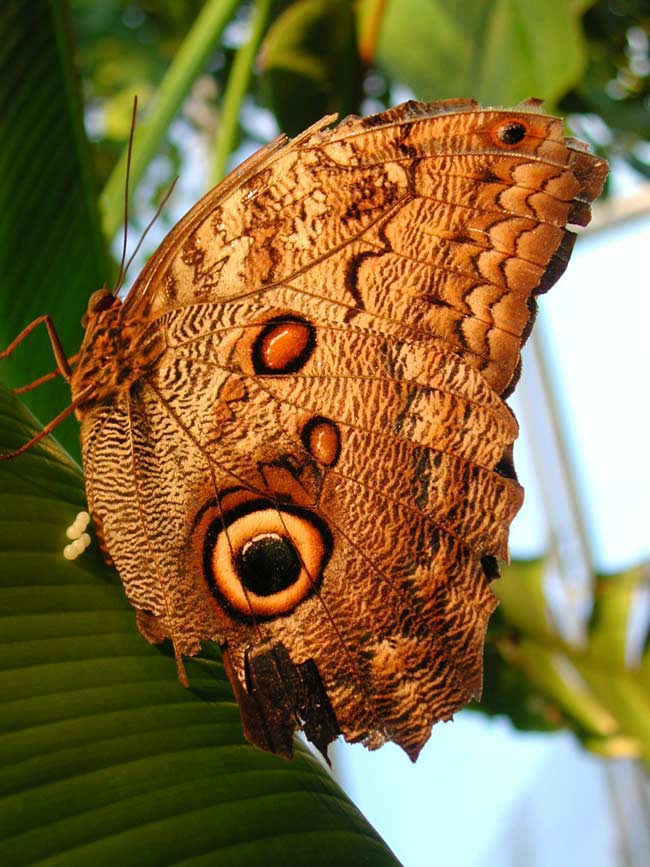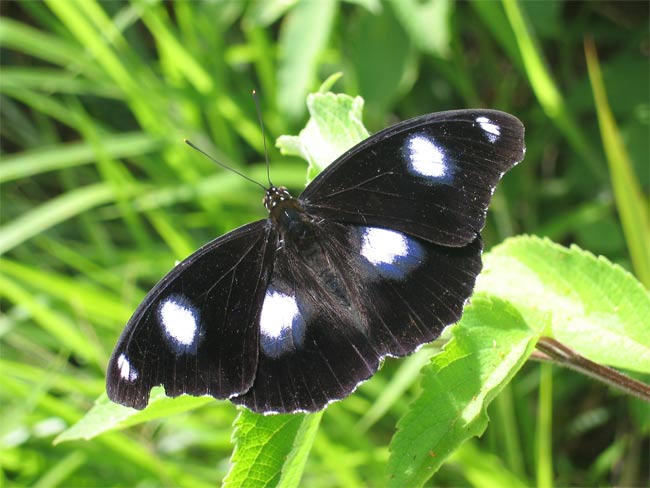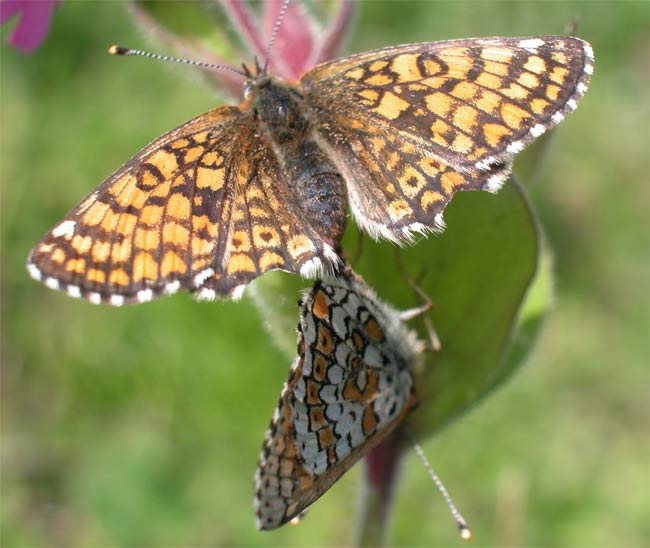why do the butterflies have their eyespots?
Some moths and butterflies often carry very symmetrical circular spots on their wings. It has long been thought that they are used to terrify enemies by imitating the enemy's eyes.
But Martin Stevens and two colleagues at Cambridge University in the UK did not give it. According to him, eye spots are so useful because they stand out. Predators are often wary of predominantly prey-shaped prey, because these prominent patterns are often a warning signal of the toxin on the prey.

Cat owl in the family Caligo is named so because they have very large eye spots on the underside of the back wing.When the butterfly rests on the leaf and folds its wings above its back, these spots become prominent.They will terrify any enemy.(Photo: Iowa State University)
To verify his point, Martin's team created artificial prey made of gray pieces of paper with dark spots on a white background with different shapes, sizes and quantities. They attached wings made of paper to the dead worms, they attached them to the tree and waited.

The male butterfly Hypolimnas bolina, also known as Eggfly butterfly or Blue Moon butterfly (Blue Moon).(Photo: Sylvain Charlat / Science)
Two days later, they found that fake worms moths with fake spots on both sides of the wings were devoured by birds in the same amount of numbers as those with eye-catching shapes like those rectangles, a large spot, or a trio of small spots. It is the eye-catching that made the trick.
So why do wing patterns look like eyes? The answer probably lies in the process of forming wings. During the formation of caterpillars, molecules cause wing cells to produce pigments that can easily radiate from a central point, thus forming circular patterns.

Glanville moth butterfly.(Photo: Howard Fescemyer / Pennsylvania State University)
Textures are like eyes in the kingdom of animals often called eye spots. But instead Stevens suggested that it be called 'spotted wing' , 'spotted tail' or 'fin spot' to refer to these patterns.
Their findings are published in Behavioral Ecology.
- Beautiful butterflies
- Butterfly's wicked secret
- Butterflies are beautiful like fairytale in Mexico
- Giant butterflies appear much in Soc Trang
- Fluttering because of dozens of butterflies
- The point of incredible facts about green butterflies
- Interesting facts that few people know about butterflies
- Learn the terrible eating habits of butterflies
- Beautiful wings of butterflies
- Do butterflies remember what they learned when they were deep?
- How to make a moth into a butterfly?
- Butterflies 'Death' is capable of 'speaking'
 Why do potatoes have eyes?
Why do potatoes have eyes? 'Tragedy' the world's largest carnivorous life: Death becomes ... public toilet
'Tragedy' the world's largest carnivorous life: Death becomes ... public toilet Tomatoes were once considered 'poisonous' for 200 years
Tomatoes were once considered 'poisonous' for 200 years Detecting microscopic parasites on human face
Detecting microscopic parasites on human face